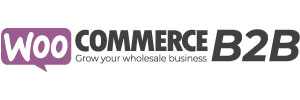We look at the Obstacles to eCommerce Integration With Sage Business Cloud, the need for eCommerce integration prefaces the fundamental problem in creating a bridge in between Sage Business Cloud and the eCommerce website. Developing a functional path needs technological capabilities that are past that of a legacy solution. It requires modern integration.
Usually, crucial stakeholders neglect the business requirement for integrating Sage Business Cloud with your eCommerce website as a result of expense, or the concern that modifying existing procedures will disrupt business.
To develop a well-run eCommerce Sage Business Cloud integration system, there are a handful of obstacles firms have to conquer. Here are four challenges:
- Not Understanding Requirements
- Outdated and Legacy Systems
- Lack of Multichannel Management
- Lack of visibility
Not Understanding Requirements:
A significant problem that business deal with takes place before they have even begun to make use of a centralized integration platform. Firms usually are not exactly sure where to begin.
IT stakeholders are uncertain on what business needs of them to effectively handle trading companions, consumers, and all the internal as well as exterior integrations that comprise their digital ecological community.
The procedure can feel overwhelming. IT managers stress whether they have the IT personnel to sustain and maintain an integration platform on top of their regular responsibilities. There is likewise the problem that moving information from one system to one more will certainly result in mistakes, safety and security risks, or information loss.
Prior to embarking on this integration modernization trip, companies have to produce internal alignment. They should determine what they are attempting to accomplish with integration, what challenges they should attend to, and what systems they intend on integrating.
Going a bit more, companies require to acknowledge what information must be integrated between the systems, as well as what processes as well as workflows can as well as must be automated.
The best eCommerce integration task begins with completion in mind.
Outdated and Legacy Systems:
While whatever may appear to function as usual on the service, the fact stays that relying on heritage and obsolete modern technology causes firms to drop as well as miss out on orders. Their modern technology does not supply end-to-end integration exposure for every single online order.
Compared with a contemporary integration system, legacy systems are cumbersome as well as downright hard to work around.
Occasionally the devices and also systems you have relied upon for many years help your organization and also will continue to meet your day-to-day company needs for the near future. Yet when you prepare to bring on brand-new partners as well as solutions, migrate applications to the cloud, or assistance large information initiatives, tradition systems typically do not supply the capabilities that the business requires to be effective.
If you are receiving fee backs from your trading companions, or you do not have the technical capability to handle API integration demands, it is likely time to take into consideration modernizing your eCommerce option.
Lack of Multichannel Management:
Generally, an eCommerce platform offers business with the technology that enables a vendor to offer to their clients on their actual own internet site with a routine internet browser. This falls short to absorb 2 vital considerations:
Retailers additionally sell through numerous other channels, such as call centers, brick and mortar shops, mail order catalogs, on the internet marketplaces, and also other web sites, to name a few.
Consumers want to buy utilizing their own devices, whether it’s an apple iPhone or their individual laptop, so there will be a consistent difficulty related to obtaining master data that can sync up with the various other systems linked to those client touch factors.
Lack of visibility:
Companies that have yet to update their remedy deal with a lack of visibility, which bans them from having the ability to make real-time choices based on efficiency. By consolidating legacy integration systems to enhance service processes, firms can centralize the amount of control they have more than a piece of information and gain end-to-end presence.
Once firms have actually fully embraced an up-to-date integration platform, they can begin to gain complete exposure for every solitary online order. Consider the value gained from complete omnichannel integration visibility. All your online, retail, and wholesale orders unified in a single view, with complete EDI as well as API integration.
Contact the Storehub.io sales team to book a consultation.












